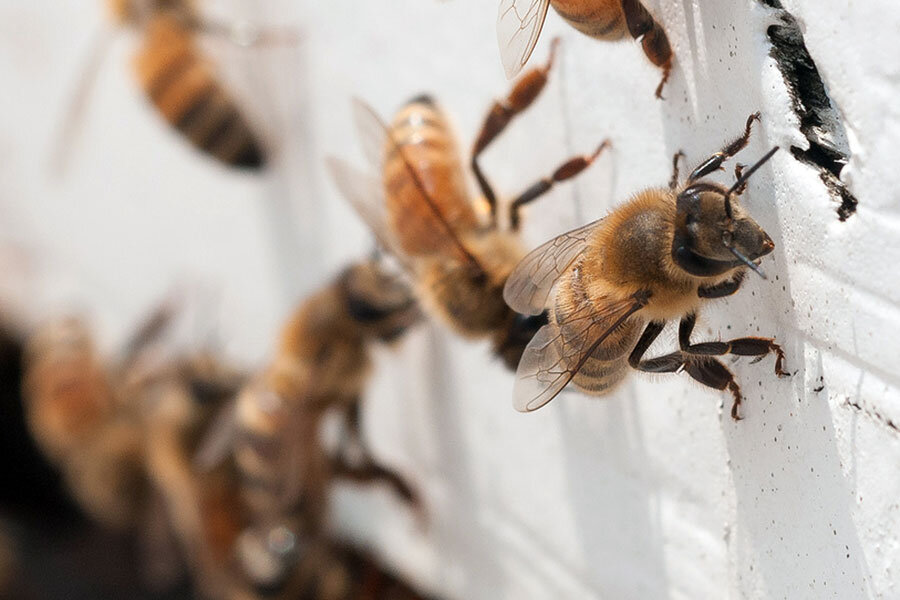How bees give a heads-up when danger is near
Loading...
Honeybees can warn each other when danger is near, says a new study published Friday in the journal PLOS Biology.
James Nieh, director of the Nieh Bee Lab at the University of California, San Diego, teamed up with researchers from the Xishuangbanna Tropical Botanical Garden, Chinese Academy of Science for the study and found that Asian species of honey bees can produce different types of vibrational “stop signals” when an Asian hornet (their primary predator) is near.
“If a honeybee is directly attacked or experience something threatening directly either through sight or smell, it will send a one-on-one, one-time signal,” Dr. Nieh tells The Christian Science Monitor in a phone interview Tuesday. “Sensed by feeling the vibration of another bee ramming its head against you,” the bee gets the message that danger is near.
There are four different “flavors” of stop signals, says Nieh, depending on the size of the threat and the proximity to the nest – and this is where the study gets especially interesting.
Nieh says a similar study on European honeybees already recognized the stop signal. But previously, the researchers believed that it was an inhibitory signal that simply told other bees to stop waggle dancing (or to stop telling other bees where to go for food) when a predator was near. This study, however, proves that honeybees’ stop signals are referential.
“After the European bee study we thought the stop signal was just something to counteract the waggle dance, to say no to that. But the stop signal encodes, in the frequency and duration of the signal, the danger level and the context of predation,” Nieh tells the Monitor. “This is quite new and sophisticated. Before, we knew that bees could illicit stop signals, but we didn’t know it encoded any additional information.”
Larger hornets invite stop signals with higher vibrational frequency and hornets close to the nest entrance require signals with longer duration. The worst-case scenario for a colony would be a large wasp close to the nest, inviting the most urgent signal of the four varieties: a long, vibrating pulse. This signal tells nearby bees to stay where they are in the nest to avoid an outside threat.
But regardless of what stop signal a bee delivers, the surrounding bees will respond based on the quantity of signals.
“There is no evidence for a chain reaction, because that could set off an unnecessary panic. Just like if humans believed everything on the Internet, it would create big problems,” Nieh tells the Monitor. The bee will receive the alarm signal, “but she doesn’t necessarily respond to it until she has received a sufficient number.”
And this is why researchers haven’t understood bee alarm signals for a long time, explains Nieh. The signals don’t cause the bee the stop moving immediately, but it increases the probability that she will soon.
“They don’t immediately respond to every signal because they are assessing the information value, they will believe the danger is more pressing if more than one bee signals them,” says Nieh. “The signal is more reliable with more independent sources.”
Although such a signal is the first of its kind among insect species, Nieh says his team’s findings are “not too surprising.”
Because the waggle dance can communicate referential, positive information on where food is located, it makes sense that the same insects would have referential communication for negative information such as predator proximity.
“Sophisticated recruitment communication that encodes food location, the waggle dance, is therefore matched with an inhibitory/alarm signal that encodes information about the context of danger and its threat level,” the authors explain in their study. “This is the first known example of such a complex alarm system in an insect and demonstrates a new level of sophistication in bee communication.”







